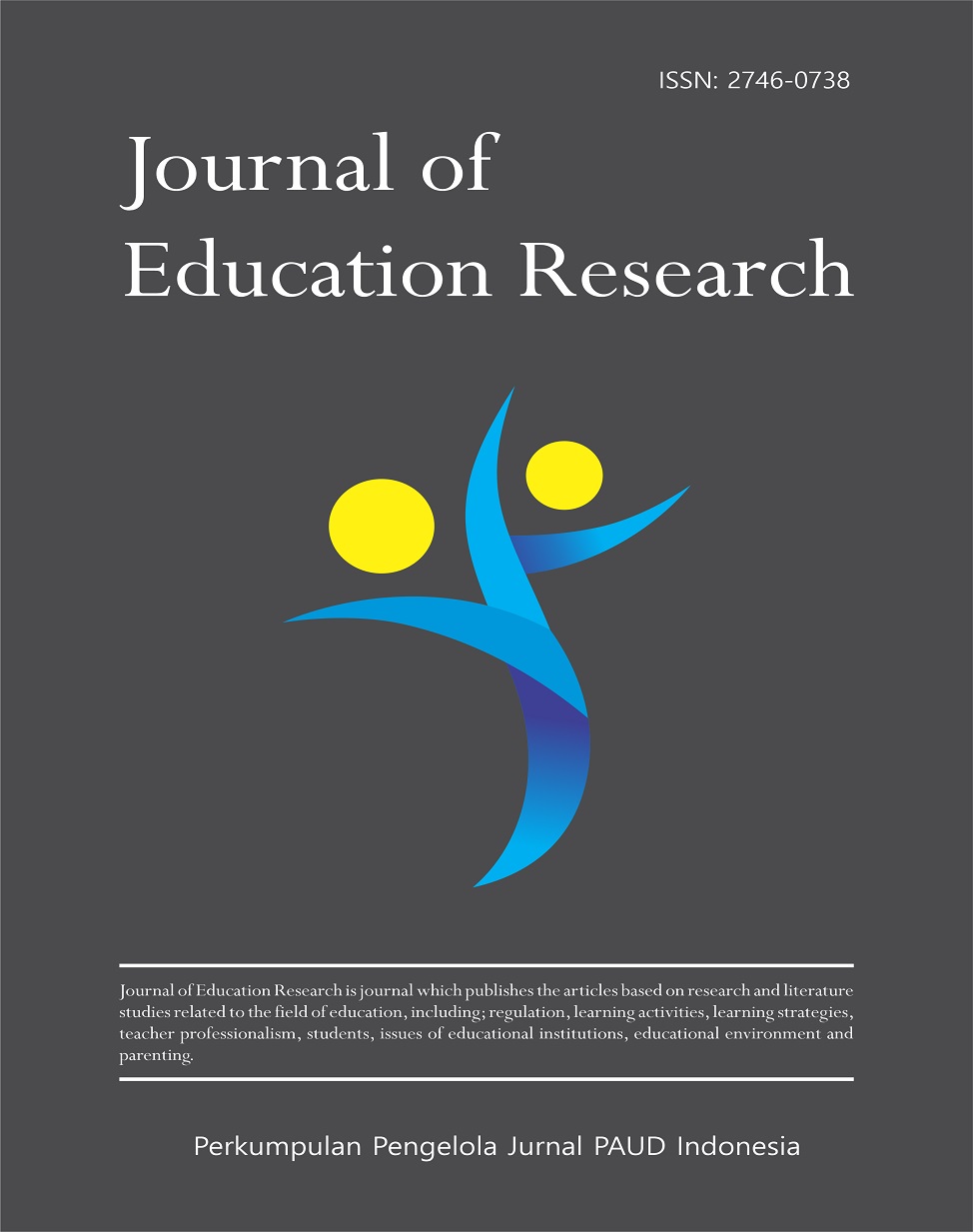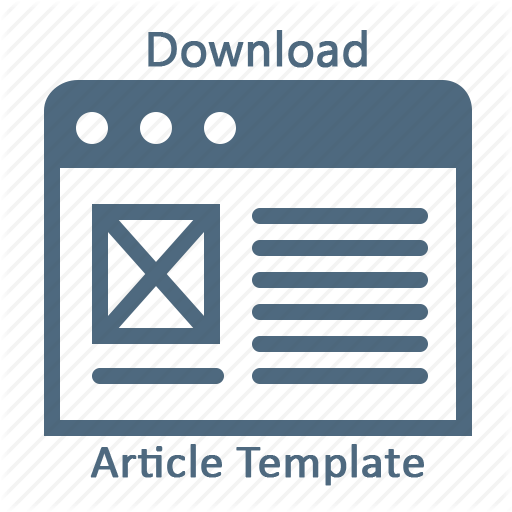Integrasi Aplikasi Berbasis Mobile pada Blended Learning: A Systematic Literature Review
DOI:
https://doi.org/10.37985/jer.v6i3.2250Keywords:
Aplikasi Mobile, Blended Learning, Integrasi, Teknologi PendidikanAbstract
Blended learning yang menggabungkan pembelajaran tatap muka dan online semakin berkembang dengan dukungan aplikasi berbasis mobile. Penelitian ini mengeksplorasi integrasi aplikasi mobile dalam blended learning menggunakan metode Systematic Literature Review (SLR) berdasarkan pendekatan PRISMA, menghasilkan 13 artikel inklusi dari Scopus dan Google Scholar. Penelitian ini menyajikan analisis sistematis tentang jenis aplikasi, fitur, dan efektivitasnya, memberikan kontribusi pada pemahaman yang lebih mendalam serta dasar rekomendasi penelitian lebih lanjut. Hasil menunjukkan bahwa aplikasi seperti Google Classroom, Moodle, dan platform Android meningkatkan fleksibilitas, interaktivitas, serta hasil belajar melalui multimedia, gamifikasi, dan umpan balik langsung. Tantangan seperti keterbatasan infrastruktur dan literasi digital tetap menjadi kendala utama, menunjukkan perlunya pendekatan pelaksanaan yang komprehensif. Aplikasi mobile memiliki potensi besar mendukung blended learning yang efektif.
Downloads
References
Baharum, A., Wan, L. Y., Yahya, F., Nazlan, N. H., Nor, N. A. M., Ismail, I., & Noor, N. A. M. (2020). Mobile learning application: Flipped classroom. Indonesian Journal of Electrical Engineering and Computer Science, 17(2), 1084–1090. https://doi.org/10.11591/ijeecs.v17.i2.pp1084-1090
Boomgaard, A., Fritz, K. A., Isafiade, O. E., Kotze, R. C. M., Ekpo, O., Smith, M., Gessler, T., Filton, K. J., Cupido, C. C., Aden, B., Yokwe, N., Mayekiso, L., Gxowa, S., Levitt, A., Dlodlo, L., Madushana, N., & Souvestre, D. L. de L. (2022). A Novel Immersive Anatomy Education System (Anat_Hub): Redefining Blended Learning for the Musculoskeletal System. Applied Sciences (Switzerland), 12(11). https://doi.org/10.3390/app12115694
Cahyana, U., Rahmawati, Y., Paristiowati, M., Sasmoko, Ahman, Ferdianto, J., & Dudung, A. (2020). Ethnopedagogy integration to mobile learning for improving student learning achievement in remote areas. Universal Journal of Educational Research, 8(5), 1687–1697. https://doi.org/10.13189/ujer.2020.080505
Dwipayanti, N. M. A., Santosa, M. H., & Kusuma, I. P. I. (2024). EFL Undergraduate Students’ Expectations of Blended Learning in The Post-Pandemic. 8(1).
Eviyanti, E., Zulherman, Z., & Polili, A. (2020). Google Classroom in Blended Learning on Teaching Research Method. https://doi.org/10.4108/eai.4-12-2019.2293797
Fransiska, K. A. W., Suarni, N. K., & Margunayasa, I. G. (2024). Perkembangan Kognitif Siswa pada Penggunaan Media Pembelajaran Digital Ditinjau dari Teori Jean Piaget: Kajian Literatur Sistematis. Ideguru: Jurnal Karya Ilmiah Guru, 9(2), 466–471. https://doi.org/10.51169/ideguru.v9i2.839
Huilcapi-Collantes, C., Martín, A. H., & Ramos, J. P. H. (2019). A mobile app for developing visual literacy on in-service teachers. ACM International Conference Proceeding Series, October 2019, 642–648. https://doi.org/10.1145/3362789.3362947
Ika, E., Putra, A. K., & Insani, N. (2024). Pengaruh Model Pembelajaran Project Based Learning (PjBL) Berbantuan Aplikasi Edmodo terhadap Kemampuan Berpikir Kreatif Siswa pada Mata Pelajaran Geografi Kelas XI. Journal of Innovation and Teacher Professionalism, 2(3), 329–338. https://doi.org/10.17977/um084v2i32024p329-338
Janah, B. U., & Ristianah, N. (2024). Penerapan Metode Blended Learning dalam Meningkatkan Kualitas Pembelajaran Pendidikan Agama Islam. 2(2), 106–113. https://doi.org/10.56854/sasana.v2i2.318
Keshavarz, M. H. (2020). A Proposed Model for Post-Pandemic Higher Education. Budapest International Research and Critics in Linguistics and Education (BirLE) Journal, 3(3), 1384–1391. https://doi.org/10.33258/birle.v3i3.1193
Koebanu, D. Ir., & Saingo, Y. A. (2024). Signifikansi Model Blended Learning dalam Pembelajaran Pendidikan Agama Kristen di Lembaga Pendidikan. Jurnal Kala Nea, 5(1), 43–64. https://doi.org/10.61295/kalanea.v5i1.148
Lestari, H., Rahmawati, I., Siskandar, R., & Dafenta, H. (2021). Implementation of Blended Learning with A STEM Approach to Improve Student Scientific Literacy Skills During The Covid-19 Pandemic. Jurnal Penelitian Pendidikan IPA, 7(2), 224–231. https://doi.org/10.29303/jppipa.v7i2.654
Li, Z. (2020). The Construction and Application of College English Blended Teaching Model Based on Mobile APP*. 416(Iccese), 901–906. https://doi.org/10.2991/assehr.k.200316.198
Mahendri, R., Mujiwati, E. S., & Aka, K. A. (2022). Readability Analysis of Local Wisdom Non-Fiction Texts in Android-Based Interactive Multimedia for Elementary School Students With Fry Graph Formulas. Jurnal Kependidikan: Jurnal Hasil Penelitian Dan Kajian Kepustakaan Di Bidang Pendidikan, Pengajaran Dan Pembelajaran, 8(2), 298. https://doi.org/10.33394/jk.v8i2.5140
Mgeni, M. S., Haji, H. A., Yunus, S. A., & Abdulla, A. A. (2024). Adoption of mobile application for enhancing learning in higher education: Students’ views from the State University of Zanzibar, Tanzania. African Journal of Science, Technology, Innovation and Development, 16(2), 265–273. https://doi.org/10.1080/20421338.2023.2289248
Muhimmatin, I., & Jannah, I. N. (2021). Aplikasi mobile berbasis android sebagai media tes prior knowledge mahasiswa biologi. Jurnal Inovasi Pendidikan IPA, 7(1), 1–11. https://doi.org/10.21831/jipi.v7i1.34335
Nasution, F. H., Nasution, N. F., & Harahap, M. S. (2024). Efektivitas Penggunaan Aplikasi Google Classroom pada Mata Kuliah Belajar dan Pembelajaran Terhadap Hasil Belajar Mahasiswa di Institut Pendidikan Tapanuli Selatan. 12(1), 338–342. https://doi.org/10.37081/ed.v12i1.5021
Oktavianto, D. A., Utaya, S., Sumarmi, & Taryana, D. (2024). Geographic-inquiry on virtual environment mobile application to support fieldwork based on blended learning. International Journal of Evaluation and Research in Education, 13(1), 466–474. https://doi.org/10.11591/ijere.v13i1.26597
Oladipupo, M. O., Nuhu, K. M., Ajani, A. H., & Ishola, A. O. (2019). Development and Usability of Chemistry Learning-App for Nigerian Undergraduates in a Blended Learning Environment. Journal of Library, Science Education …, 78–88. https://alhikmah.edu.ng/jolselt/index.php/ajemc/article/view/22
Osifo, A. (2019). Improving collaboration in blended learning environments through differentiated activities and mobile-assisted language learning tools. Proceedings of the 15th International Conference on Mobile Learning 2019, ML 2019, 3–10. https://doi.org/10.33965/ml2019_201903l001
Polakova, P., & Klimova, B. (2022). Vocabulary Mobile Learning Application in Blended English Language Learning. Frontiers in Psychology, 13(May). https://doi.org/10.3389/fpsyg.2022.869055
Ramírez-Donoso, L., Pérez-Sanagustín, M., Neyem, A., Alario-Hoyos, C., Hilliger, I., & Rojos, F. (2023). Fostering the use of online learning resources: results of using a mobile collaboration tool based on gamification in a blended course. Interactive Learning Environments, 31(3), 1564–1578. https://doi.org/10.1080/10494820.2020.1855202
Sari, R. N., & Amalia, A. V. (2021). The Effectiveness of Blended Learning Using Moodle on Student Independence and Learning Outcomes. Journal of Environmental and Science Education, 1(1), 1–7. https://doi.org/10.15294/jese.v1i1.45077
Setyoko, S., Sarjani, T. M., Mahyuny, S. R., & Suryanti, S. (2023). Implementation of Android-Based Blended Learning for Improving Learning Outcome and Information Literacy Skill of Students. Jurnal Penelitian Pendidikan IPA, 9(1), 74–79. https://doi.org/10.29303/jppipa.v9i1.2248
Sukirno, Ary Kiswanto Kenedi, & Nelliarti. (2020). Peningkatan kemampuan literasi informasi siswa Sekolah Dasar melalui model Project-Based Learning. Pros. SemNas. Peningkatan Mutu Pendidikan, 1(1).
Utami, S. V. S., Mansur, H., & Qomario. (2024). Pemanfaatan Media Pembelajaran Wordwall untuk Meningkatkan Hasil Belajar Siswa di SD. Journal of Education Research, 5(4), 6081–6089.
Yilmaz, Y., Suner, A., & Yilmaz, O. (2022). Mobile learning in a flipped classroom: Findings from a “5-lecture-5” blended learning design for large classes. Turkish Journal of Biochemistry, 47(1), 119–126. https://doi.org/10.1515/tjb-2019-0417
Downloads
Published
How to Cite
License
Copyright (c) 2025 Shaumi Rani, Maria Carliovita Samita Koli, Jayanti Noor Purbo Rukmi, Siti Maysyarah, Citra Kurniawan

This work is licensed under a Creative Commons Attribution-ShareAlike 4.0 International License.
Authors who publish with this journal agree to the following terms:
- Authors retain copyright and grant the journal right of first publication with the work simultaneously licensed under a Creative Commons Attribution-ShareAlike 4.0 International License that allows others to share the work with an acknowledgement of the works authorship and initial publication in this journal.Â
- Authors are able to enter into separate, additional contractual arrangements for the non-exclusive distribution of the journals published version of the work (e.g., post it to an institutional repository or publish it in a book), with an acknowledgement of its initial publication in this journal.
- Authors are permitted and encouraged to post their work online (e.g., in institutional repositories or on their website) prior to and during the submission process, as it can lead to productive exchanges, as well as earlier and greater citation of published work (See The Effect of Open Access).









